How to Fertilise Your Orchids the Easy Way
Many orchids grown in home gardens are epiphytic, that is, they grow naturally on tree branches or trunks with their roots exposed to the environment. In cultivation, they are grown in open and free-draining media such as charcoal chips, where their roots get to dry quickly after each watering. However, it can be a challenge to fertilise them when they are grown in such media.
Soil-grown plants are usually fertilised through slow-release fertiliser pellets buried in the soil. But application of this method to orchids grown in open media is not practical. Fertiliser pellets would just simply fall through the spaces between the media and out of the pot with time. Besides, coming into direct contact with fertiliser pellets can burn and damage orchid roots!
As a result, most gardeners resort to using water-soluble fertilisers. Such fertilisers come in solid or liquid form, and are first dissolved and diluted in water before they are applied either as a spray on leaves as a foliar fertiliser, or poured into root zones as a drench. This method of fertilisation, as one can expect, requires the gardener to follow a regime to ensure his plants are fed regularly.
Innovative way to fertilise orchids
A recent visit to orchid nurseries revealed innovative ways to feed epiphytic orchid plants using slow-release fertiliser pellets. These growers use porous holders to keep fertiliser pellets in place. These holders allow water to seep into it and dissolve the nutrients in the pellets. The resultant fertiliser solution then flows on to feed the plants.
Method 1
The first method features a plastic net pot, traditionally used to house fertiliser pellets for aquatic plants. It has a lid which can be opened and closed and a stake at the base to anchor it. The stake offers the advantage of ensuring that no orchid roots come into contact with the fertiliser pellets by elevating them well away from the roots.
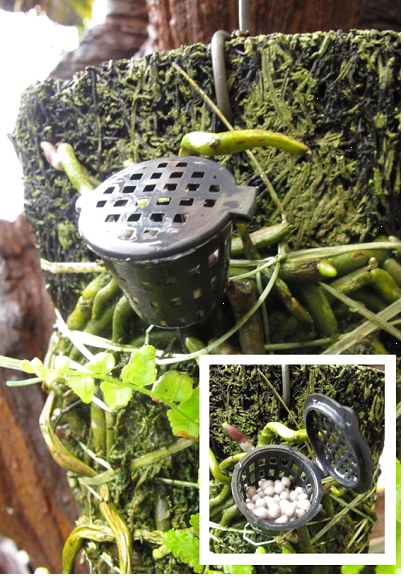
Above is an example of how this method can be used to feed plants that are mounted on fern bark or wooden slabs. When you water, make sure you water through the net pot to dissolve nutrients from the pellets. This will ensure your plants are fed each time.
The net pot method can also be used to feed plants that are grown in pots of charcoal.
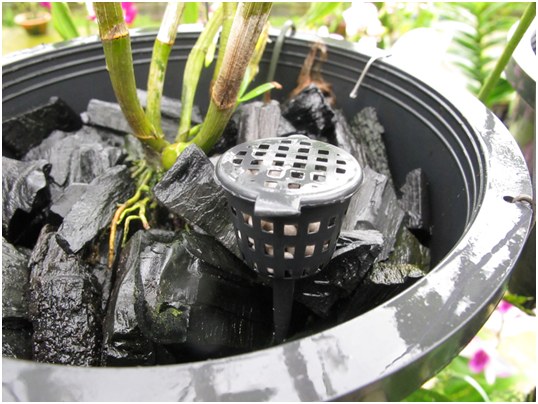
Method 2
The second method employs a bag made from plastic netting to hold fertiliser pellets. This bag is then tied to the wire holder of slab-grown orchids. Note that this method should only be used if the wire holder leads directly to the slab at the end. Dissolved nutrients from the pellets will flow along the wire and down to the roots growing on the slab.
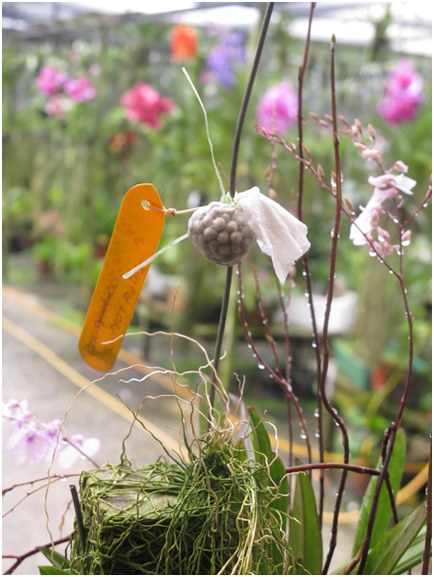
A final note, it is vital to use fertilisers that are formulated for use on orchids. A common ingredient found in many fertilisers for garden plants contain urea, which is not well absorbed by orchids.
By Wilson Wong
Have views or comments on this article? Let us know via this form. If you would like to give us feedback on any other areas relating to our parks and gardens, please submit via https://www.nparks.gov.sg/feedback


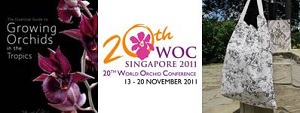
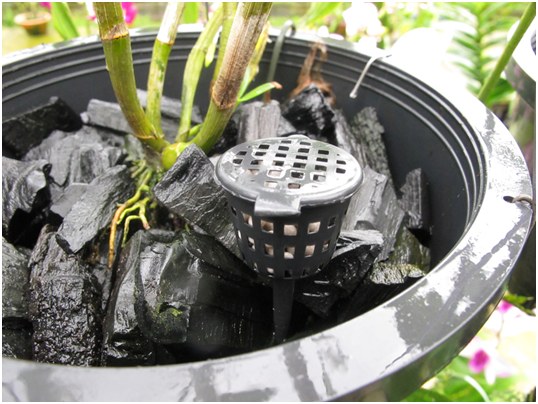

Felix Siew 12/3/2015 11:43:10 AM